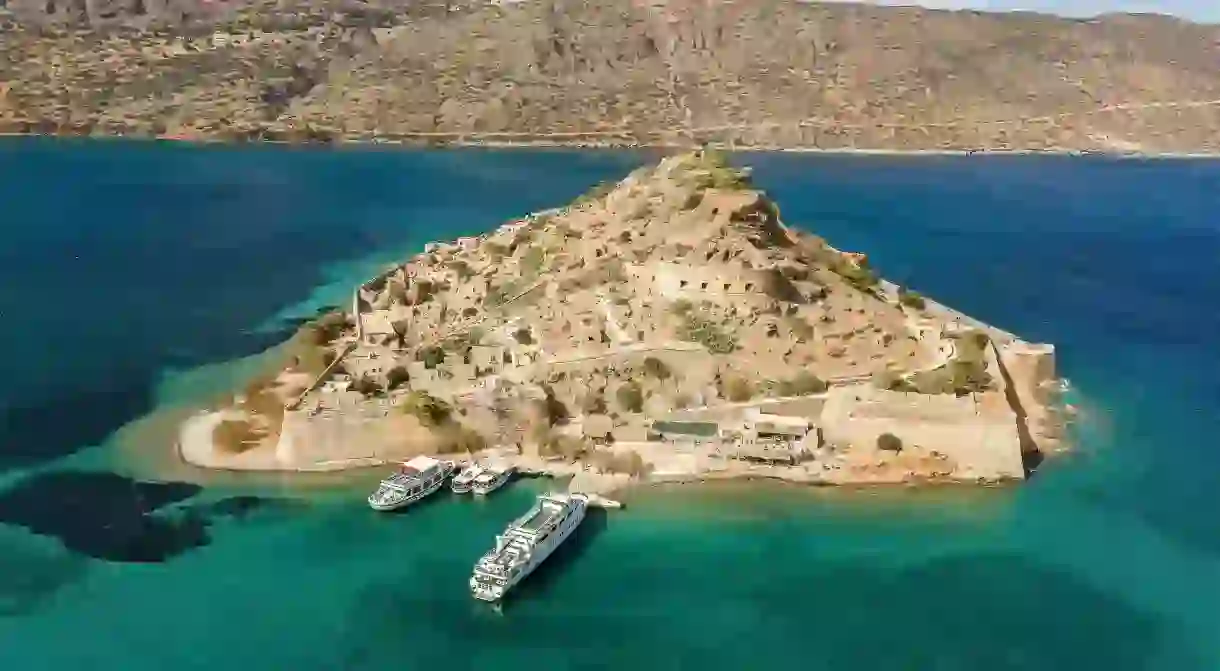11 Offbeat Activities in Crete for an Unforgettable Vacation

Sightseeing, sunbathing and dining at innumerable tavernas are just some of the ways to enjoy your time in Crete. But there’s another side of the island that’s worth exploring – from traditional weaving to visiting a former leper colony. We reveal the best offbeat activities this fascinating Greek island has to offer.
Crete is synonymous with great food, amazing beaches, the Cretan lyra and, of course, raki. And while museums and archaeological sites might be enough to understand the history of Crete, it is local customs that hold the key to truly discovering the island. While on the island, join a raki distillation feast, swim besides thousands of palm trees and learn how to work a traditional wooden loom.
Celebrate raki
Natural Feature
If one thing comes to mind when you think of Crete, it’s raki (also known as tsikoudia). The strong local spirit, made from Cretan grapes, is found in restaurants and practically every home on the island. Come October and November, farmers turn the distillation process into a massive Cretan celebration – the rakokazanemata, filled with traditional music and delicious meze dishes. For a more intimate experience, observe the process at Myragapi, a private distillery in the rural settlement of Stironas.
Explore Greece’s largest artificial marine park
Aquarium

Learn a craft in an artistic village
Historical Landmark
In Greek mythology, Verekinthos was the mountain where mythical beings taught people crafts such as metallurgy, pottery and glasswork. Today, that same place in Chania is an artistic village, run by a community of diverse craftspeople. Pick one of their courses to learn anything from sculpture and ceramics to woodworking and hagiography. “The crafts revive but also actively evolve tradition,” says artisan Yiannis Vlavogilakis. “In these times of consumerism, when cheap and easy products prevail, any handicrafts workshop is a continuation of tradition.”
Go hiking at Samariá Gorge
Park

Wander around Spinalonga
Ruins

Join a real Cretan party
Spend an unforgettable night at one of the many places in Heraklion city offering traditional food, paired with raki and live music until the early hours. Listen to musicians play the Cretan lyra, while locals perform traditional Cretan dances. “Renowned musicians invite the younger ones on stage to perform together, and soon everyone is part of one big group of happy people,” says local lyra musician Marinos Giantsidis. Get a taste of an authentic Cretan fiesta at Palaiino or Idiomelo.
Visit a traditional knife store
Knives are a symbol of Cretan pride, highly intertwined with the island’s rich heritage. But few Cretans still practise the craft of knife-making the old-fashioned way. Mihalis Pahticos is one of the experts, bringing tradition to life through his crucible. Visit Armenis, his workshop and store in Chania city (Sifaka 14), to watch him make a knife from scratch. “Each knife is not only functional but also has its own personality,” he says. “No two knives look alike – they’re handmade, thus unique.”
Swim next to a tropical palm grove
About 20km (12mi) east of Sitia town lies Vai, a magnificent beach of white sand and turquoise waters, surrounded by palm trees – a landscape quite uncommon for a Greek island. Boasting 5,000 Cretan palm trees (Phoenix theophrasti) and stretching across a wide valley, Vai forms the largest palm grove in Europe. Relax under an umbrella, grab a bite to eat or wander through the lush forest to take in the idyllic scenery.
Discover fashion fusing tradition and trend
If you thought weaving on a loom was a dead art, this sustainable fashion brand will prove you wrong. Klotho, founded in Crete in 2016 by designer Alexandra Theohari, presents contemporary items, all handmade on the loom. Pass by the studio and showroom to check out the collections, or take part in Klotho’s weaving workshops. As Alexandra says: “The wooden loom uses a very old technique, but gives you the opportunity to create modern pieces, solely relying on the weaver’s dexterity and imagination.”
Delve into diverse musical traditions
In 1982, Irish musician Ross Daly founded Labyrinth, a creative space exploring music traditions from around the world. It has since become the beating heart of Crete’s music scene, organising a host of seminars and concerts. “We focus on traditions related to tropical music coming from the Mediterranean and all the way to Asia Minor, Middle East, Persia and India,” says events organiser Stella Vassilaki. Take part in an instrument-centric or voice workshop, and catch one of the gigs every Friday in the summer.
Attend an alternative beach festival
A seaside village in southern Crete was once an epicentre of the hippie movement. During the 60s, hippies and tourists gathered in the caves of Matala village, where they spent weeks, months, some of them even years, following an all-natural lifestyle filled with music, fishing, painting and meditation. Under those same principles, the area now holds Matala Beach Festival every summer, hosting live performances and artistic activities, inviting everyone to experience the same hippy freedom on the beach they experienced 60 years ago.













